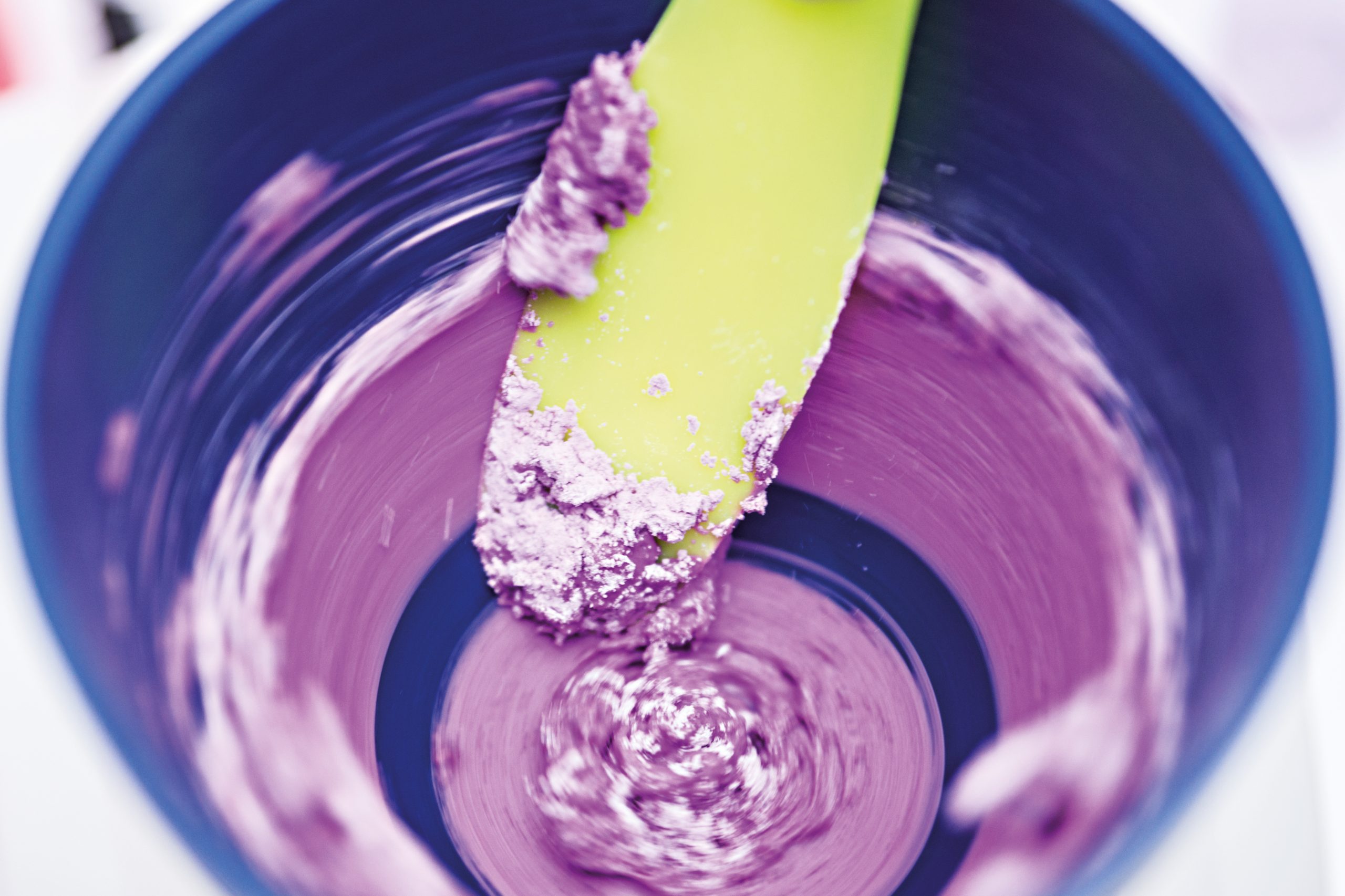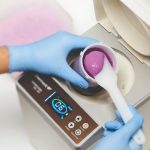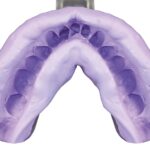
Alginate impressions are a basic procedure that can be performed by all dentists, from prosthodontists to orthodontists.
The advantages of alginate impressions is the low cost, patient tolerability, the ease and rapidity of the procedure, the simplicity of the instrumentation required and precision (1).
However, all these advantages depend on the correct performance of the phases regarding the preparation of powder/liquid impressions, namely:
- measuring
- mixing
Measuring is a fundamental step: the powder and water must be mixed in the ratio indicated on the pack by the manufacturer. Different power-to-water ratios do not guarantee the maintenance of the chemical and physical characteristics declared by the manufacturer, making the impression result unpredictable, which could lead to sub-optimum clinical results. (2)
Before measuring out the product, shake the box containing the alginate powder to favour dispersion and make the mixture more homogeneous.
Distilled water should be used to be sure that it does not contain any minerals that could affect the gelation reaction and it should be used at the temperature indicated by the manufacturer. Higher temperatures will make the reaction faster, whereas cooler ones will make it slower.
As regards mixing and the measures that favour an optimum result, a number of mixing techniques can be used:
- manual
- semi-automatic
- automatic
Consult the Zhermack dental alginates catalog
Manual mixing

For manual mixing, measure the powder out into the mixing bowl first and then add the water. This favours the incorporation of the water into the powder (2).
Once the water has been added, start the timer to keep track of the mixing time, working time and setting time.
Use the spatula to incorporate all the water into the powder, mixing the alginate with rapid “figure-of-8” movements (3). Once an even mixture has been achieved, use the spatula to press the mixture against the inner walls of the mixing bowl to prevent the incorporation of air bubbles in the mixture (3).
Once the mixing time is over, use the spatula to place the alginate in the impression tray, before the end of the working time.
Semi-automatic mixing

Once the water has been added, start the timer to keep track of the mixing time, working time and setting time.
Use the spatula to incorporate all the water into the powder.
Switch on the mechanical mixer so that the mixing bowl starts to turn. Use the spatula to press the mixture against the inner walls of the mixing bowl to prevent the incorporation of air bubbles in the mixture.
Once an even mixture has been obtained and the mixing time is over, use the spatula to place the alginate in the impression tray, before the end of the working time.
Automatic mixing

Automatic mixing is the most recent evolution for alginate mixing. This technique is fully automatic. Open the hatch on the machine, set the times, place the measured powder in the container, add the water, mix it quickly into the powder, close the container, place it in the machine, close the hatch and start the centrifuge.
Once the centrifuge phase has finished, use the spatula to place the material in the impression tray.
Mechanical, and particularly automatic, mixing significantly reduces the number of air bubbles in the mixture (4).
This lower number of air bubbles in the mixture reduces the risk of having macroscopic defects in the impression and consequently macroscopic defects in the gypsum model, and therefore ultimately favours better prosthesis precision.
References
- Cervino, G., Fiorillo, L., Herford, A. S., Laino, L., Troiano, G., Amoroso, G., … & Cicciù, M. (2019). Alginate materials and dental impression technique: A current state of the art and application to dental practice. Marine drugs, 17(1), 18.
- Cervino G. Impression materials: does water affect the performance of alginates? Minerva Stomatol. 2020 Apr;69(2):106-111)
- McDaniel, T. F., Kramer, R. T., Im, F., & Snow, D. (2013). Effects of mixing technique on bubble formation in alginate impression material. General dentistry, 61(6), 35-39.
- Dilip A, Gupta R, Geiger Z. Dental Alginate Impressions. [Updated 2020 Jul 10]. In: StatPearls [Internet]. Treasure Island (FL): StatPearls Publishing; 2020 Jan-. Available from: https://www.ncbi.nlm.nih.gov/books/NBK470480
Do you want more information on Zhermack Dental products and solutions?
Contact us


 Zhermack SpA has been one of the most important producers and international distributors of alginates, gypsums and silicone compounds for the dental sector for over 40 years. It has also developed solutions for the industrial and wellbeing sectors.
Zhermack SpA - Via Bovazecchino, 100 - 45021 Badia Polesine (RO), Italy.
Zhermack SpA has been one of the most important producers and international distributors of alginates, gypsums and silicone compounds for the dental sector for over 40 years. It has also developed solutions for the industrial and wellbeing sectors.
Zhermack SpA - Via Bovazecchino, 100 - 45021 Badia Polesine (RO), Italy.


